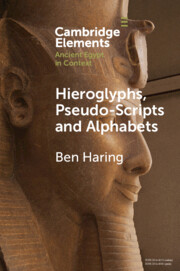Element contents
Hieroglyphs, Pseudo-Scripts and Alphabets
Published online by Cambridge University Press: 22 November 2023
Summary
- Type
- Element
- Information
- Online ISBN: 9781009400800Publisher: Cambridge University PressPrint publication: 21 December 2023
References
- 2
- Cited by

